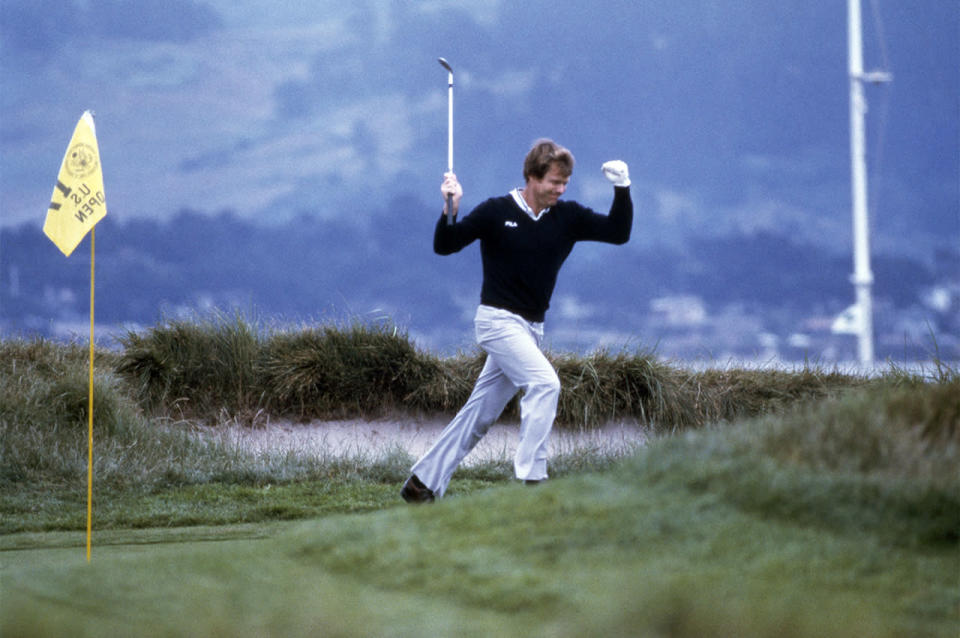
Tom Watson was late for our interview. That’s not his style so he texted me the next morning at 6:14 a.m. to apologize as if it had kept him up half the night. I told him “no worries,” that I would’ve waited another hour or two – at least – to sit at Bay Hill Golf & Lodge and drink Arnold Palmers with him while discussing golf, life, and more specifically, his life in golf.
After all, he had a legit excuse for being late.
It’s easy to lose track of time while roaming the halls of Palmer’s Bay Hill, eyes trained on the walls at all the memorabilia and framed photos (this is Watson’s favorite below). Imagine the memories with The King that he must have.
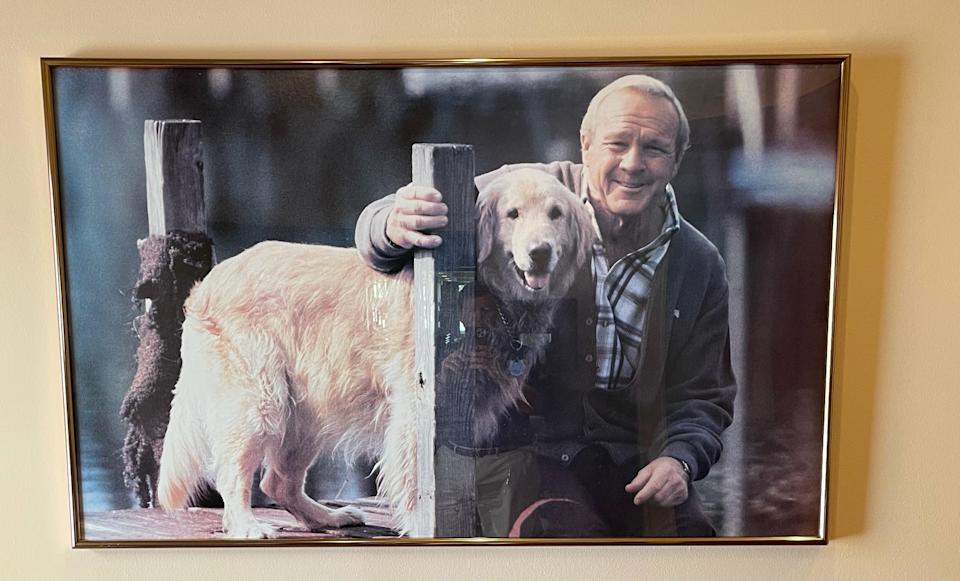

I first met Tom, my favorite golfer of my youth, at an exhibition he gave ahead of the 1990 British Open at St. Andrews. I was part of an overseas exchange program and our coach/chaperone happened to bump into him after the exhibition washing his hands at the bathroom of all places and had enough chutzpah to approach him and ask him if he would spend a few minutes with the lone group of Americans in the audience. Watson couldn’t have been more generous with his time, and the experience left a lasting impression on me. Funny enough, our conversation at Bay Hill in late December ahead of the PNC Championship began with Watson relaying his own unforgettable experience as a teen with his childhood hero at a golf exhibition.
GOLFWEEK: Since we’re here at Arnie’s Place, do you remember the first time you met him?
TOM WATSON: I had a chance to play with Arnold in an exhibition in 1965 at Brookridge Country Club with Stan Thirsk, my teaching pro, and that was kind of the beginning for me. Arnie was my hero, and a couple years later I had a chance to play with Jack, and he was the villain. I loved the way Jack hit the golf ball. I watched him hit these 1‑irons off the tee at Topeka Country Club in an exhibition. He hit this 1‑iron straight up in the air. I’m like, ‘I can’t do that.’ I go back to Stan and I said, ‘He hits the ball so high,’ and he said, ‘You’ve got to be more upright. You’ve got to get your hands and arms.’ So that’s what we did, tried to pattern my swing more after Jack. But with Arnie, I shot 34 on the front nine and tied him and then 40 the back nine. It was a lot of fun.
My dad asked Arnie a question when he was showering getting ready to take off after the round was over. He said, ‘What’s one thing, Arnie, that will help my son be a better player?’ He said, ‘Have him play in as much competition as he can.’
GW: That was it, huh?
TW: That was his advice, and I give the same advice to kids today.
GW: Were you already dreaming of playing on the PGA Tour?
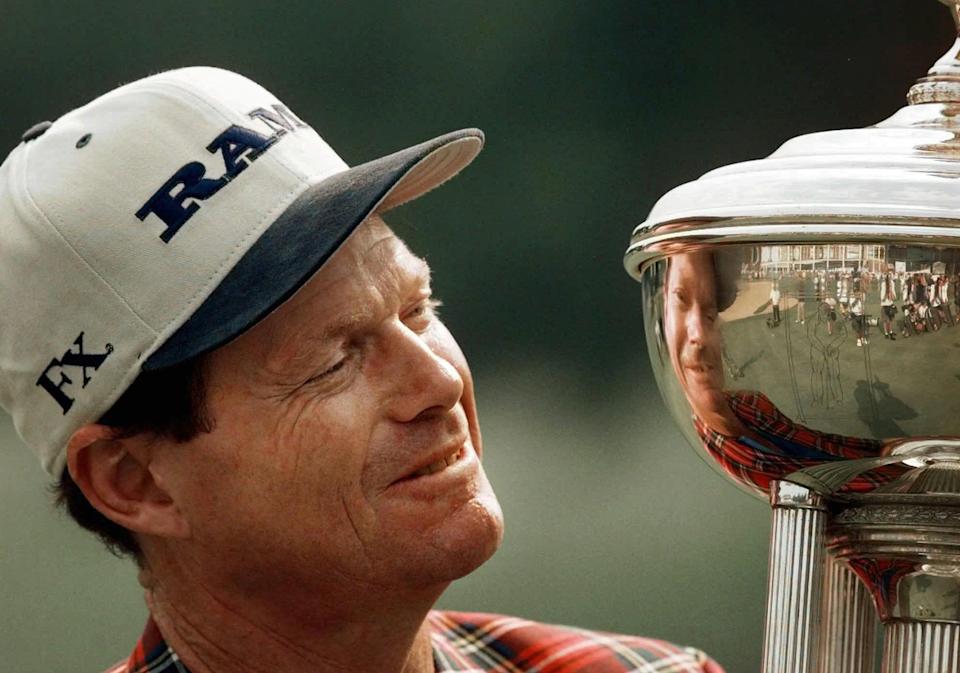

Tom Watson looks at his trophy after winning the Colonial in Fort Worth, Texas, on Sunday, May 24, 1998, for his 34th PGA Tour victory. (Photo: Eric Gay/Associated Press)
TW: Yeah, yeah, I had a dream. Maybe someday, you know. I played a lot with Stan and the pros in Kansas City, so I had a chance to play with really good players a lot. I started to hit the ball a long way. I could putt better than anybody. I had started to dream, yeah.
GW: You played basketball and football through high school. How did team sports shape your competitive spirit?
TW: I always loved team sport. I loved to compete. My older brother, Ridge, was the one I competed with. He was three years older than me, and we competed at everything. He was bigger and stronger so I had my work cut out.
GW: In a previous story I wrote about you a couple years ago, David Feherty had this great quote, he said: ‘If you were one of two flies on a wall, you’d want to be the first fly up to the top of the wall.’ What makes you such a competitive guy? Where does that come from do you think?
TW: It’s the nature of a father who’s competitive. When we played golf, it was serious. He didn’t suffer a mis‑hit shot gladly. If you hit a shot up close to the hole but you didn’t hit it solid, he’d say, ‘Ugh, you didn’t hit that. You missed that.’ He always made sure that you never were taking credit where credit wasn’t due, and I always like that about my father.
GW: Is there a player today that reminds you a bit of yourself?


Two-time Masters champion Tom Watson gets a fist bump from six-time Masters champion Jack Nicklaus after sinking a birdie putt during the 2018 Par-3 Contest at the Masters Tournament at Augusta National Golf Club. (Photo: Curtis Compton/Atlanta Journal-Constitution via AP)
TW: Well, Justin Thomas a little bit, upright swing, hits the ball high, solid. A little bit.
GW: What was it that you really liked about Patrick Reed when you were captain of the (2014) U.S. Ryder Cup team?
TW: Did I say I liked Patrick Reed? Are you putting those words in my mouth? I’ll tell you what I liked about Patrick Reed. He was all in on winning. He was really disappointed when he failed. He was inconsolable after losing the last hole in the match on Friday, going to a tie I think it was, and he was all in. He was just a real tough competitor.
GW: Does the golf ball go too far?
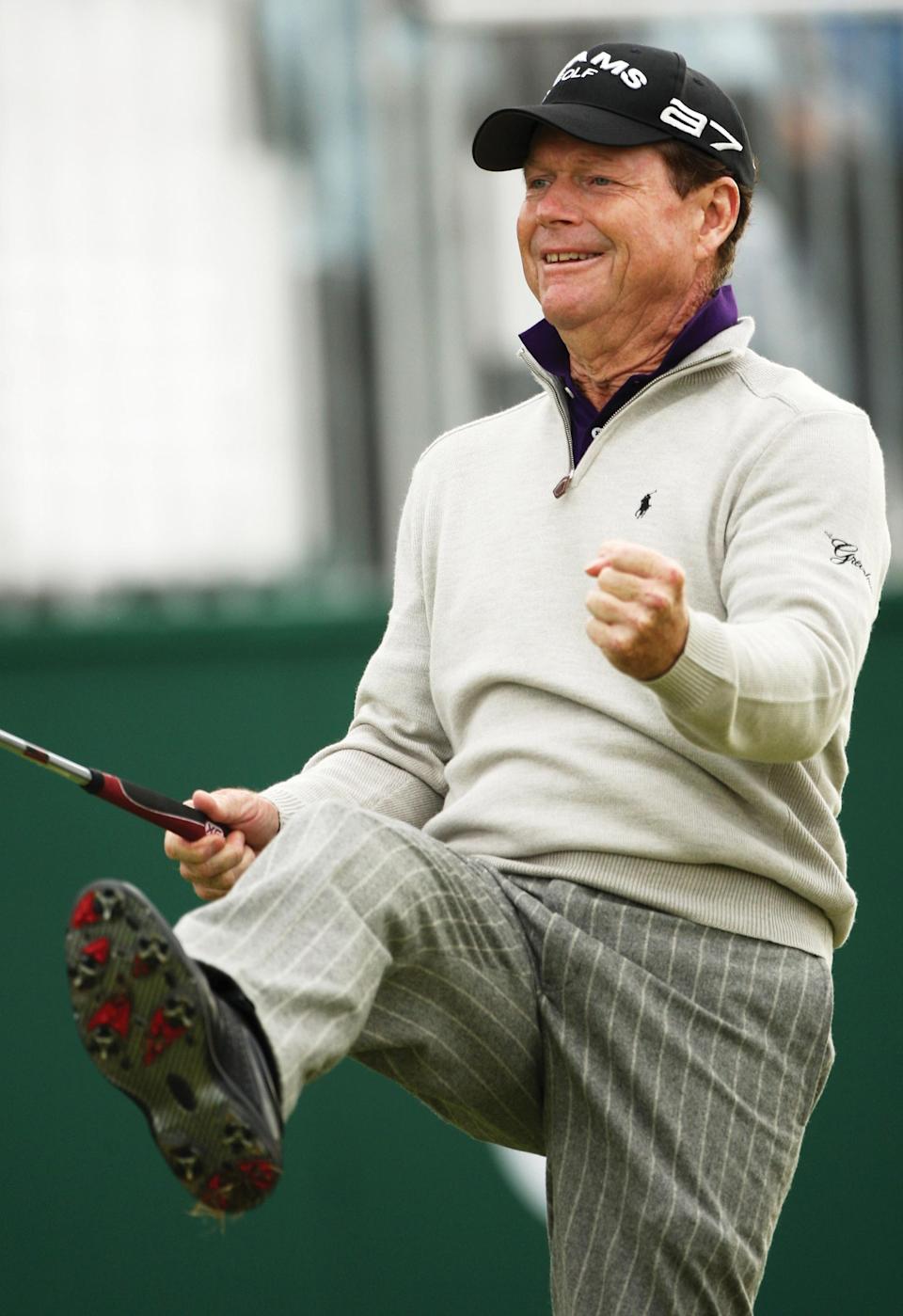

Tom Watson.
TW: Last year (at the Arnold Palmer Invitational) when DeChambeau was right here at the 6th tee and television was all over him. He did it not once, but I think twice. That did more for golf than any one thing did last year. So, does it go too far? People love to see the ball hit that far. I love to see it hit that far. If the courses are too short for these guys, then the scores will be lower because of it. I don’t have much of a problem with that.
But there will be courses built that are commensurate to the distance they hit it. I mean, I played here yesterday and I was looking at the tees they built on this golf course. If I played from those tees, there were a lot of par‑4s I could not reach in two. I may carry the ball 240, but these guys are carrying the ball 280 to 290 in the air. Last year 61 guys averaged 300 yards or more, 11 guys averaged 310 or more, but one guy 320 or more average. That’s a long way. But the carry is the thing. I was with Jack at his Fore Love tournament with the Bryan brothers, his children’s hospital benefit on Sunday and Monday, and I asked him about where he places the fairway bunkers in his design now. I said, ‘Where do you put it out there? Do you put it so they have to carry 320 to carry over? He said, ‘that’s about right.’
When I designed golf courses, I first started at 250 was my turning point. Then it became 267. Now it’s like 280 is the turning point, back tees on championship golf courses.
Again, golf courses I think have to adjust to the distance that guys hit it. I would think the wrong thing to do would be to make the golf ball go shorter. If they did, they ought to make it go shorter for everyone, you, me, Aunt Alice, everybody.
GW: You’re not a bifurcation guy?
TW: No.
GW: Did you like the changes to the Rules of Golf?
TW: Yeah, very much. Yeah. Spike mark was the best one.
GW: How do you think your pal (former USGA President) Sandy Tatum would have thought of the changes?
TW: He would have thought it would be sensible.
GW: Do you favor the trend towards more brutal old‑school setups of yesteryear?
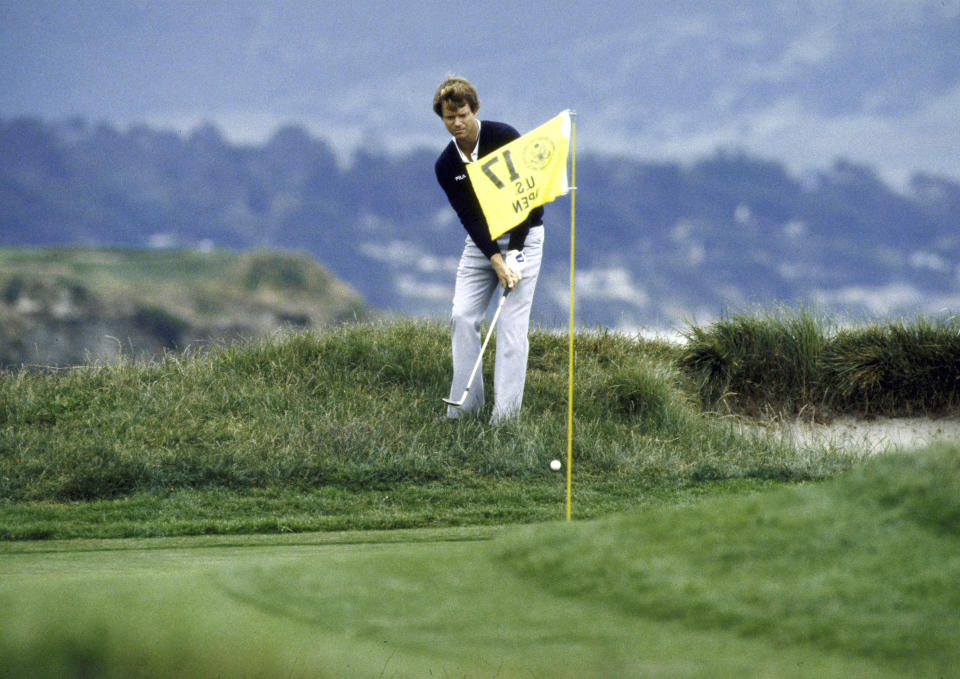

Tom Watson at the 1982 U.S. Open. (Photo: Richard Mackson/USA TODAY Network)
TW: The way the U.S. Open should play is as the toughest golf course that we play all year. You don’t make it unfair. Sometimes the golf courses get unfair because the courses on which they play, they change too much during the play of the day with wind conditions, Shinnecock, Pebble. They change too much, and they change and make it unfair. They make controversy when they make it unfair, and that’s an issue. The greens are getting beyond what they should be getting if you can’t control it, and if you can’t control it, then most courses – places like Oakmont you can, you can get the right consistency there for the whole day. But some courses you can’t. The composition of the greens won’t allow you to do that.
GW: Did playing in ‘the Massacre’ at Winged Foot in the 1974 U.S. Open shape your experience?
TW: No. I had early experiences in the national amateur four times. We played heavy rough. Heavy. My dad said, ‘Son, if you win the U.S. Open, you beat the toughest field on the best golf course,’ and I always aspired to win the U.S. Open because of that. Still is our national open.
GW: What did you make of the way the guys played Winged Foot in 2020, where Matt Wolff shot 65 in the third round while only hitting two fairways and Bryson DeChambeau was able to bomb it ridiculous lengths and not be punished too severely?
TW: What was the final score?
GW: Bryson won at 6 under (274).
TW: What was second place?
GW: Even-par (280).
TW: That’s a U.S. Open. When you’re in a heavy rough lie, it’s an uncertain shot coming out, very uncertain. It’s a penalty. The uncertainty is your penalty. You don’t know if you have a bad lie, you don’t know, how hard do I hit it. How hard do I have to hit this to get it somewhere close? The ball is not going to come out with any spin or anything like that. It’s just, a lot of times it’s just, you hit and hope. That’s what it should be because you’ve missed your shot. It’s all about accuracy in a U.S. Open to me. Par is the ultimate goal in the U.S. Open. Par after 72 holes.
GW: You may be the best in history at not dwelling on a poor shot, but if there’s one shot you wouldn’t mind having a do-over on, what would it be?


Tom Watson tips his cap as he walks on the 18th green during the second round of the 2016 Masters Tournament at Augusta National Golf Club. (Photo: Rob Schumacher-USA TODAY Sports)
TW: Well, I’d like to have the putt back in 2009 at Turnberry, the last hole, and let me hit a better putt than that. That was an awful putt. It’s embarrassing how bad that putt for the win was.
GW: Has your perspective on what might have been at that 2009 British Open changed at all?
TW: No. I mean, when I lost in a playoff, it was over.
GW: When you do think about the last hole, do you think about your club choice on the second shot or ‑‑?
TW: No.
GW: Third shot?
TW: Yeah, maybe a little bit. Maybe I should have used a sand wedge from that lie. But I made the choice that I thought was the best choice at the time. I had an option of hitting sand wedge versus putting it, sure.
GW: What was your reaction to seeing Phil Mickelson win a major this year?
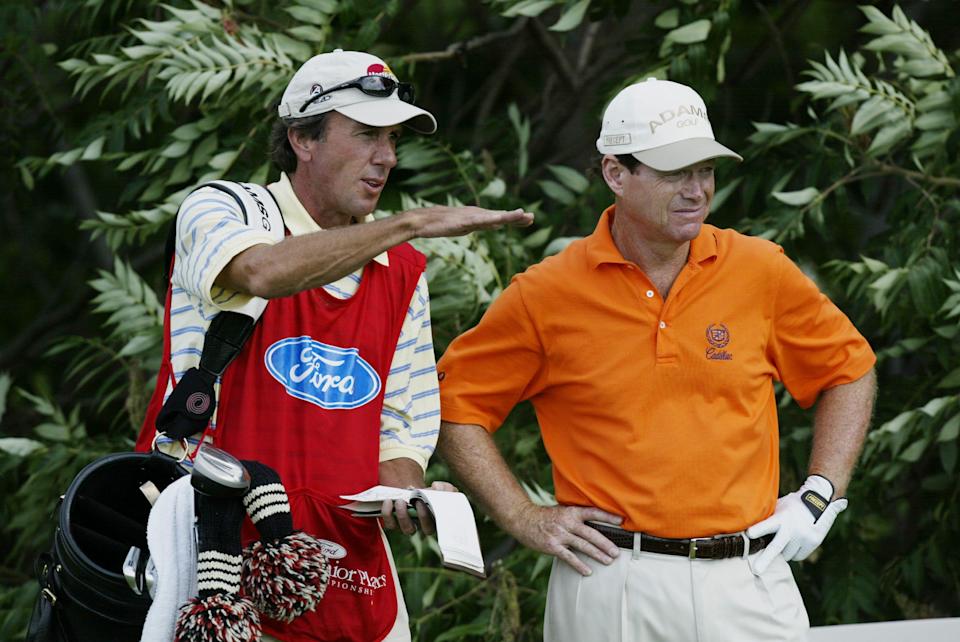

Tom Watson and caddie Bruce Edwards at the 2003 Senior Players Championship at the TPC of Michigan in Dearborn, Michigan. (Photo: Craig Jones/Getty Images)
TW: It was wonderful, yeah. How about that? On that golf course, yeah. He played some inspired golf, didn’t he?
GW: You came so close at age 59. Did you think it was just a matter of time that someone would win a major in their 50s?
TW: Yeah, I don’t see why anybody shouldn’t win. If they have a good short game, good putting stroke. I loved what Jack had to say when he won the ’86 Masters. He said, ‘I never thought I’d win the Masters again because these greens are designed for a young man’s nerve, how fast they are.’ There’s a certain amount of truth to that. You lose that as you get older.
GW: Have you and Phil talked since Kiawah?
TW: No, I haven’t seen him.
GW: Am I right that the two of you guys have kind of buried the hatchet over the Ryder Cup?
TW: We don’t have to go into that.
GW: Did you guys reconnect over your shared experience with cancer?
TW: Yeah, throughout Hilary’s cancer, yeah, Amy was very kind to Hil all the way through it.
GW: Whose support that you didn’t expect meant a lot to you?
TW: I don’t know if there’s ever been anybody whose support I didn’t expect. I live my life trying to act the way I do. I don’t ask for anything in return. So looking for support from people that I didn’t expect it from is not – that’s not what I’m about.
GW: OK, shifting gears: I read this little snippet in a story that I’ve always wanted to ask you about.


Tom Watson at the Augusta National Golf Course during the 1984 Masters. (Photo: Lannis Waters/The Augusta Chronicle)
GW: It was almost a throwaway line in a story but it stuck with me because it seemed so authentically you. In the 1968 San Francisco Amateur, you were a freshman at Stanford playing at Harding Park, and you called a penalty stroke on yourself that nobody saw you take. Do you remember that?
TW: Yeah. Tenth fairway at Harding Park, I had a 3‑wood in my hand, par‑5. Put the 3‑wood down and the ball moved and I said, ‘Hey, my ball moved over here.’
GW: That’s golf, right?
TW: That’s what you’re supposed to do. That’s what they’re trying to teach these kids in the First Tee program. There are consequences sometimes that you didn’t – even if you cause something like that to happen, the rules say, well, you have to suffer the penalty. Is it fair? Probably not, in the scheme of things. But those are the rules.
GW: What is the junior golf scene like in Kansas City today versus when you were growing up?
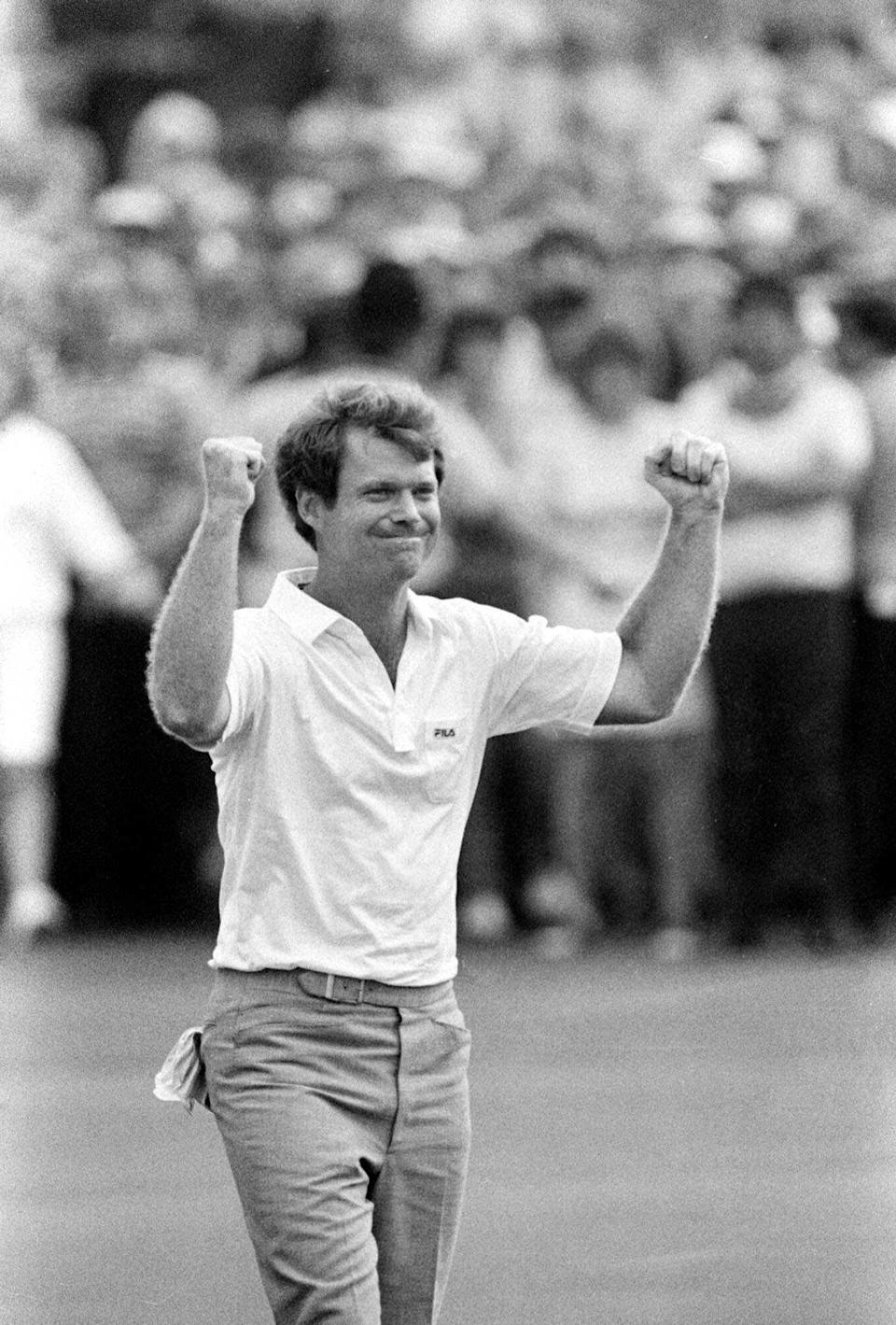

Tom Watson raises his hands in triumph July 17,1983, after winning the British Open at the Royal Birkdale Course in England. (Photo: Associated Press)
TW: Well, I think we’re on the verge of creating a really strong program here. The First Tee program, we’re reinventing it. We’re trying to develop what the First Tee of Metropolitan New York area has done. They have five paid professionals running their five campuses there, along with their volunteers and other hourly-paid professionals to help teach the kids and mentor the kids, and that’s what we need. Volunteers are great, but the thing is I want the kids to learn how to play the game.
You teach kids the game of golf, teach the etiquette, and by the way, you teach them the nine core values, as well. This is part of the game. This is how the game is played. This is how you respect people in the game. Golf is a tough game. Having mentors be there and teachers be there that when kids fail understand how to get the kids to try as hard as they can to be a success, that’s a goal that we have in the program now that maybe was not there before.
I want the kids from the First Tee program along with the Youth on Course program in combination to become lifetime golfers. My foundation is dedicated to that ultimate goal, and you raise money for that, and we’ll continue to raise money for that. We hope to create more campuses in Kansas City. We’ve got one as a pilot campus. Like the New York campus, they have huge financial support there. Big. We don’t in Kansas City.
Through my foundation we started to garner a pretty good nest egg of support, and that support is going to grow and be able to grow that and I hope have a perpetual foundation that will get these kids involved with the game through the First Tee or whatever program comes along. There are lots of other programs – PGA Junior League program gets them involved with playing golf, Kansas City Junior Golf Association does – to get them to grow with the game, get them to learn how to play and then on the golf course, and then once they’re on the golf course, there’s Youth on Course to go out and play for five bucks, and they’ll continue to play the game.
GW: What made you want to endorse Youth on Course?
TW: Just makes ultimate sense. Golf has three issues that you look at: access, where can they play. Well, the public course is where Youth on Course is based. The second is the cost of it. How much does it cost? Youth on Course addresses that. And third, it’s tough to learn the game. You have to have perseverance. We’ve got a really good program director at the First Tee of Kansas City. He’s a marvelous coach. He was a college coach, and he’s all in on teaching people how to play the game. I really believe we’re on the precipice of creating a very significant program in Kansas City that we haven’t had there before.
GW: You could live wherever you want; why is Kansas City still the place for you?
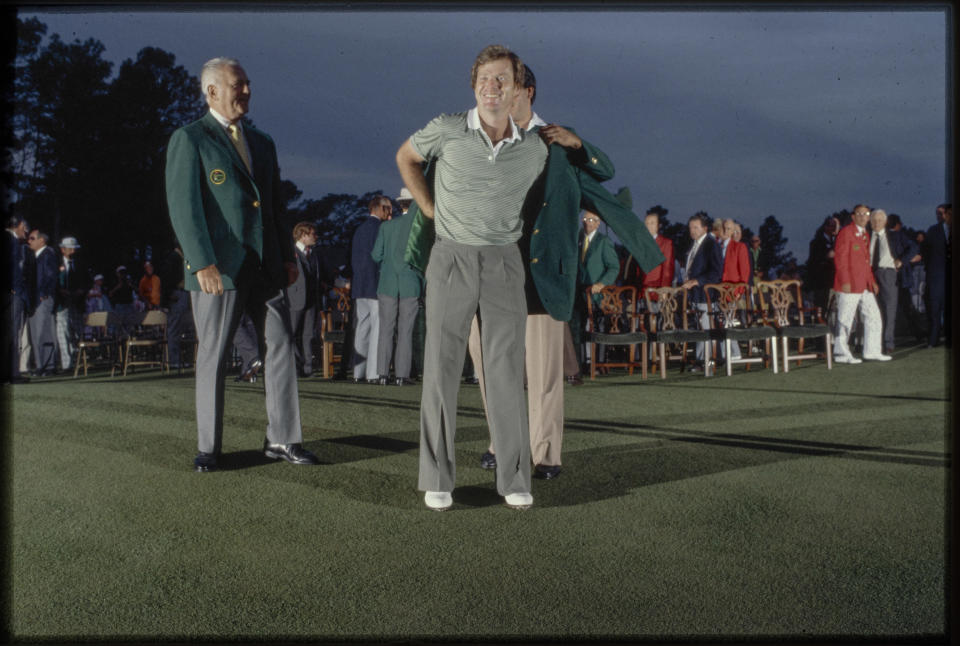

Tom Watson being congratulated after the green jacket presentation at Augusta National Golf Club on Sunday, April 12, 1981. (Photo: The Augusta Chronicle)
TW: Well, Kansas City is my home. I have my family and friends mostly there in Kansas City. I ask you the question, why would I want to move away from my family and friends? Life is full when you have your family and friends. If need be, I can always rent the weather.
GW: I hear you like to hang out at the Topgolf in KC?
TW: I don’t hang out there, but I do go out there every now and then. I enjoy it. That’s fun.
GW: Are people surprised when they see an 8-time major winner there?
TW: Oh, yeah. They go, ‘Hey, look, it’s Tom.’
GW: How much golf are you playing these days?
TW: I’ve been playing a lot, getting ready for the Father‑Son, trying to find a swing that works. It comes and goes every now and then. I think, ‘I’ve got it,’ and then the next day I can’t find it. It gets lost. My body is not very strong anymore, and my balance isn’t as good, so I’m mis‑hitting the ball more now than I did 10 years ago.
At my age of 72, to be able to play courses and not perform the way I used to, I’m not sure whether I’d get a lot of joy out of it. I’m not sure.
It’s all about joy. It’s all about having fun in the game and joy. Some people, when you have deteriorating age skills, some people can deal with it better than others. I still enjoy practicing and trying to hit some shots consistently, one after another. Sometimes I get them, like I said, sometimes the next day I don’t have them. But I don’t play golf a lot. I still do love to practice. If I start hitting the ball pretty well, I’ll go play. If I’m not hitting the ball very well, I’m not going to play.
GW: Do you still get that joy out of feeling a good shot?
TW: Yeah, I do. It’s rare, that solid shot. I hit everything thin or fat.
GW: One four‑foot putt for all the marbles: Jack or Tiger?
TW: Jack. He would make it for sure.
1
1
